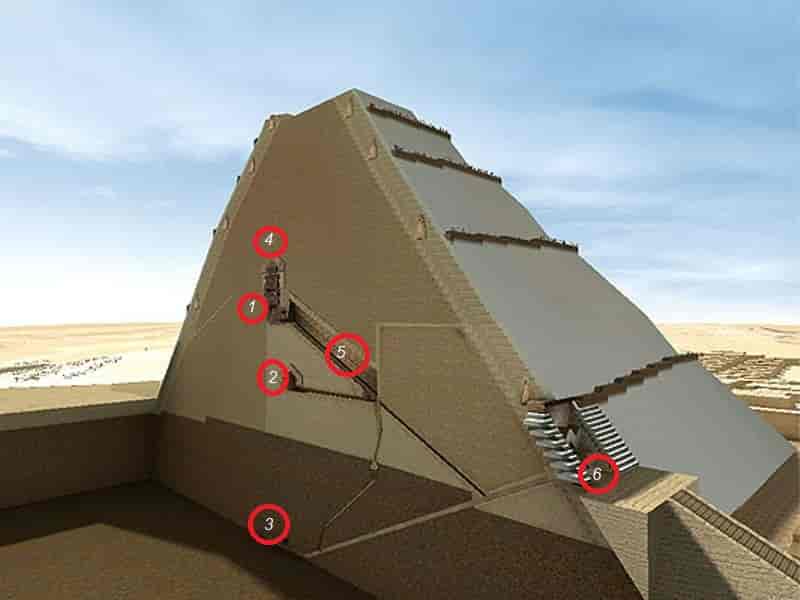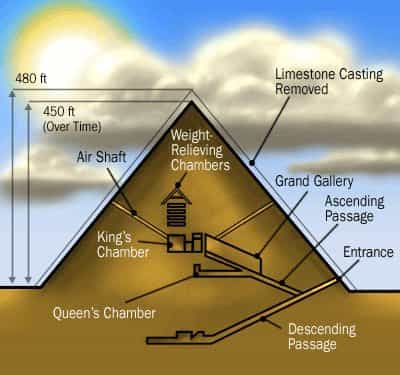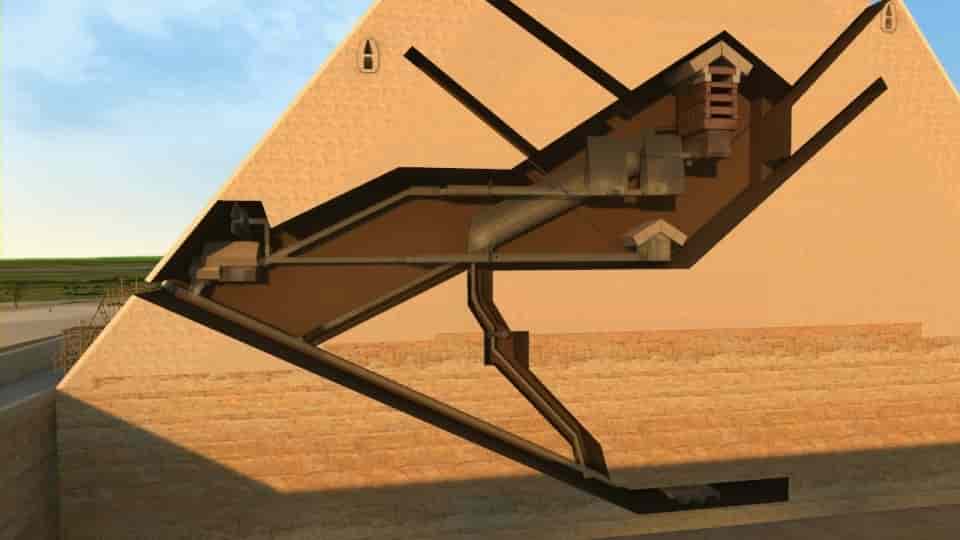The most popular pyramid by the tourists who know Egypt for the first time is the famous Pyramid of King Khufu or “the Great Pyramid “as they all call it there.
Today we will get inside it to describe one of the most important historical monuments in the entire history of mankind.
The faces of the pyramid seemed to be smooth from afar, but as we approach we see that they are formed by large blocks of stone, many of which are larger than a man and weigh several tons.
Originally, the pyramid had a limestone lining that allowed a smooth surface to form, but that has long since disappeared. Each of its faces measures 232 meters, its height being 137 meters. But these simple measures give little idea of its majesty, and there is no doubt that it is the most magnificent tomb in the world.
What does it look like inside the Egyptian Pyramids?
- 1. The King’s chamber
This is the main chamber of the pyramid. Unlike later pyramid chambers, its walls are blank. A granite sarcophagus sits inside, but no lid has ever been found.
- 2. The Queen’s chamber
The name of this chamber is a misnomer. Many Egyptologists believe that it was originally built for Khufu. However, as he was still living when the chamber was finished, it was abandoned.
- 3. Unfinished subterranean chamber
This chamber lies below ground level. It may have been built in case Khufu died early, but he may have also simply changed his mind about where he wanted to be buried.
- 4. Relieving chambers
Houdin believes that these chambers were built to relieve weight on the King’s Chamber. Others have thought that they were for ventilation or to allow Khufu’s soul to rise to heaven.
- 5. The grand gallery
This long, narrow room slants upwards. It has a corbelled ceiling and benches along its sides, with slots cut into each bench. Egyptologists are not quite sure about its use.
- 6. The entrance
The entrance wasn’t created until 820 CE by Caliph Al-Ma’mun, who tunneled into the pyramid so they could search for treasure. The original entrance was sealed after the pyramid’s completion.









